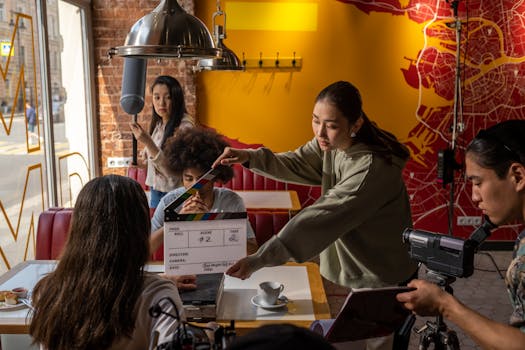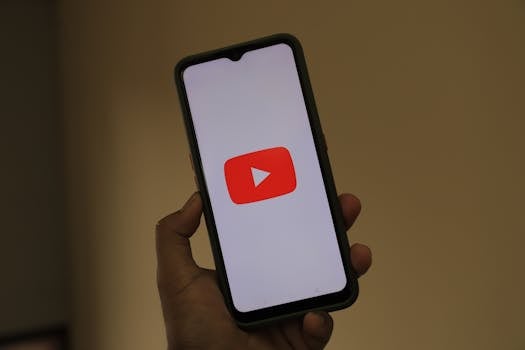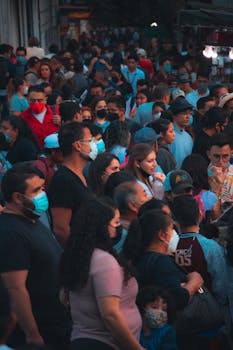TV Shows
Iconic TV Characters Who Redefined Pop Culture
Explore the lasting impact of iconic TV characters on pop culture. Learn how character arcs, relationships, and representation have evolved to shape trends, conversations, and unforgettable moments.
Advertisement
Few things stick in the memory like the personalities that leap off the screen in our favorite series. Memorable tv characters don’t just entertain—they shape what we talk about at work, school, and dinner tables nationwide.
These unforgettable tv characters represent more than just a role—they reflect cultural shifts and inspire new conversations. Delving into their stories reveals how television changed approaches to storytelling, identity, and even social values over decades.
Read on to see how boundary-pushing tv characters have reimagined pop culture, challenged stereotypes, and offered fresh perspectives that resonate in every corner of daily life.
Defining the Qualities That Make TV Characters Stand Out
By understanding what truly sets iconic tv characters apart, you’ll spot the difference between temporary trends and lasting influence in your favorite shows. These distinctions become clearer with direct examples and comparisons.
Strong characterization usually comes from a blend of originality, vulnerability, and evolution right on screen. You’ll see how these qualities manifest differently across decades, genres, and networks.
Originality Drives Recognition Beyond Each Episode
Audiences remember tv characters that offer something never seen before—either a distinctive voice, an unusual backstory, or quirks no other character owns. Consider how Kramer’s entrance on Seinfeld is instantly recognizable to fans.
Writers and actors collaborate to develop mannerisms or catchphrases, like Sheldon’s “Bazinga!” from The Big Bang Theory, that help embed characters in pop culture. Repetition fosters recognition, and original elements help those traits stick.
Try watching a pilot with these lenses: note what feels fresh or unexpected and ask yourself, “Would I imitate or quote this person?” That gut feeling signals a tv character has staying power.
Vulnerability Turns Performances Into Lasting Legacies
The greatest tv characters evolve by showing flaws—think Tony Soprano in therapy, or Walter White admitting fears in Breaking Bad. Genuine emotion connects viewers to characters more deeply than any plot twist can.
Actors use subtle facial cues, posture, and tone to build that sense of vulnerability. Small moments—like a sigh, shaky hand, or averted gaze—often become iconic in themselves, revealing motivation beneath the surface.
As you watch, jot down moments of visible struggle or admission. These memorable beats frequently mark a show’s emotional high point and become points of discussion among fans long after episodes air.
| Character | Key Trait | Impact | Takeaway |
|---|---|---|---|
| Don Draper (Mad Men) | Mystery | Redefined anti-heroes | Look for complex motivations |
| Rachel Green (Friends) | Relatability | Fashion icon, cultural catchphrases | Spot moments everyone can relate to |
| Omar Little (The Wire) | Code of Honor | Role reversal in crime genre | Note shifts in viewer expectations |
| Buffy Summers (Buffy the Vampire Slayer) | Strength | Revisioned female leads | Track ways strength is depicted |
| Dr. Gregory House (House M.D.) | Sarcasm | Popularized complex medical dramas | Listen for how sarcasm builds depth |
Noticing the Influence of Character Arcs on Pop Culture Trends
Examining how tv characters change over time lets you recognize new themes, language, and fashion trends that ripple out from each series. This lens turns show-watching into a cultural exploration.
When a beloved character’s journey takes an unexpected turn—like a major moral decision or a dramatic relationship change—the ripple effect shows up in everything from social media memes to Halloween costumes.
Character Arcs Create Conversation Starters and Trendsetters
Iconic tv characters introduce new language or style cues that quickly escape the screen. Fans copy a signature look, repeat notable lines, or organize debates mimicking the characters’ own dilemmas.
Writers push boundaries by letting characters make truly tough choices—a death, breakup, career shift—or dive into spaces rarely seen on TV before. This risk-taking sets trends across other media and daily life.
- Imitate distinctive clothing—copy a bold accessory from a character and you’ll see friends notice and comment right away.
- Quote major catchphrases—repeat these during casual conversations, as these lines often become shorthand for shared experiences.
- Share reaction GIFs—find an expressive moment and use it online, adding humor or emotion to group chats daily.
- Recreate famous scenes—enact these moments at parties or with friends as a fun, interactive way to celebrate a beloved tv character.
- Debate character decisions—use a “what would ___ do?” scenario for lively discussions that mirror fan communities everywhere.
Each action above ties you deeper to a show’s cultural footprint, reinforcing which tv characters become household names.
Social Moves for Spotlighting Character Evolutions
When a character pivots—growing from villain to hero, or transforming personal beliefs—pay attention to how peers mimic those changes. You’ll notice echoes in conversations and personal choices all around you.
Rising discussions about characters who challenge old stereotypes show how influential strong arcs are. Stories spotlighting diversity and resilience carry lessons far beyond entertainment value to real outlooks.
- Support shows that evolve—recommend evolving series to friends, aiming to discuss how an evolved tv character changed over time.
- Host themed watch parties—center conversations on key turning points observed in character arcs; reflect on why these changes matter.
- Curate mood playlists—pick music inspired by characters’ journeys, fueling new connections between screen stories and daily playlists.
- Analyze dialogue in group discussions—review lines signaling internal change step by step and note how they drive plot development.
- Craft fan fiction or art—explore alternate outcomes for characters, learning new skills through creative reinterpretation.
Small actions like these cause ripple effects where personal engagement breeds curiosity, group discussion, and sometimes, new cultural norms.
Spotting How Ensemble Casts Reinvented TV Characters’ Relationships
Examining the chemistry within ensemble casts opens up practical strategies for understanding how tv characters foster connection and conflict on screen—each dynamic offers real-life lessons.
Meaningful Interactions Build Recognition Fast
When Ross and Rachel from Friends have a misunderstanding, it’s not just the script but their shared glances and silent cues that spark viewer engagement. Those micro-interactions echo real relationship patterns.
Apply this at home: pay attention to how your group’s smallest habits or inside jokes resemble those from TV’s strongest ensembles.
By watching these habits, you clarify what builds rapport or fuels friendly bickering—valuable for understanding your own relationships, too.
Balancing Comedy and Drama Elevates Ensemble Scenes
On shows like The Office, each tv character blends personal quirks with the surrounding group’s distinct energy. Comedy often grows from the odd pairing of personalities who wouldn’t interact in any other context.
Notice how a joke lands harder when it bounces between multiple characters, not just one. Comedy as a team sport brings out each member’s strengths, giving rise to fan-favorite moments.
Try this by teaming up with friends to play improv games—imitate a dynamic from ensemble sitcoms, rotating roles, and matching timing. You’ll spot which combos get laughs, just like writers do.
Tracking Evolving Social Norms Through TV Character Milestones
Directly observing how tv characters break new ground—whether by challenging standard roles, pushing forward diversity, or mirroring changes in society—shows viewers exactly where TV can lead real-world conversations.
Landmark Characters Set New Cultural Standards
When Ellen DeGeneres’ character Ellen Morgan came out on network TV, it marked a media milestone. Audiences witnessed an immediate impact in the form of broader representation and fierce industry debate.
Similarly, the rise of Black Panther on screen directly influenced mainstream conversations on diversity, belonging, and heroism within and outside TV contexts.
Map major character shifts against historical events: pinpoint how these moments line up with real-world change to understand why some series feel so timely.
Diverse Storylines Reflect and Shape Viewer Expectations
Contemporary shows like Pose and Orange Is the New Black introduce tv characters whose identities invite fresh forms of dialogue and activism. These characters’ arcs influence what people now expect—and demand—from storytellers.
Reflect on new shows you encounter—are lead roles offered to voices previously missing from prime-time TV? Jot down shifts, then discuss them with friends as a quick reality check on shifting norms.
Action: Tweet or post about breakthrough characters you encounter and tag shows or networks. This boosts visibility and signals to creators which changes matter most to you.
Reflecting On Pop Culture Through the Lens of TV Characters
Revisiting the journeys of iconic tv characters clarifies how they mark pivotal shifts in both creative storytelling and broader culture. Their traits, arcs, and relationships expand that definition for each new generation of fans.
Every major turn, from wardrobe trends to moral dilemmas, finds its roots in what these tv characters show us about ourselves and our world. Their presence continues to challenge, inspire, and elevate the dialogue far beyond the small screen.
Paying attention to evolving characters lets you take part in their legacy—spotting trends, sparking debates, and connecting your experiences to those moments that keep TV at the heart of pop culture.
Trending Topics

The Art of Movie Posters: Why Design Still Matters
Appreciate movie posters as timeless visual art that captures story tone, emotion, and lasting cinematic identity in every frame.
Keep Reading
How Real Locations Transform Movie Storytelling
Explore movie locations that bring stories alive, enhancing realism, emotion, and atmosphere through genuine visual storytelling.
Keep Reading


